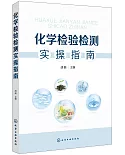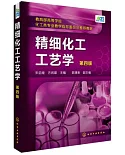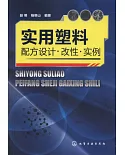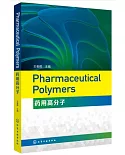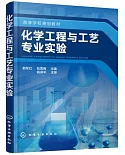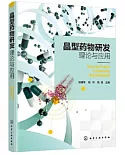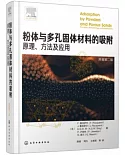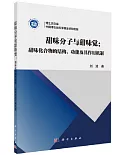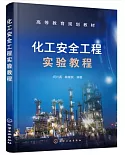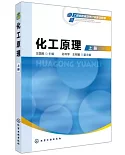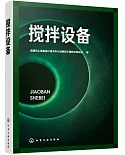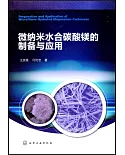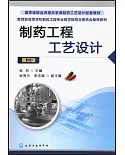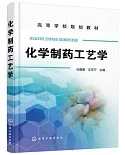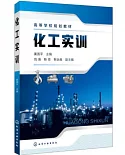作者陳洪章基於幾十年來在天然纖維素原料生物技術的大量研究過程中所積累下的一些經驗,在查閱大量文獻的基礎上,結合自身的工作,並綜合國內外研究進展,編寫了《纖維素生物技術--理論與實踐》。內容上體現了近年來在纖維素生物技術發展中的新思路、新方法和新進展,從植物纖維的主要組成(如纖維素、半纖維素和木質素)及其結構入手,提出了天然纖維素原料「原料初級煉制」、「組分分離」、「分層多級利用」、「選擇性結構拆分」等新理念、新概念;並在此基礎上,將纖維素原料當成多級資源,重點介紹通過生物技術使纖維素原料在生態農業、生物能源、化工、制漿造紙等行業所發揮的作用,進而形成別具特色的天然纖維素原料生態工業園。
本書可供從事纖維素科學研究、教學的科技人員及研究生,從事農業資源利用和產業開發的科技人員和管理人員閱讀參考。
目錄
1 Brief Introduction to the Biotechnology of Lignoceilulose
1.1 Definition of Natural Lignocellulose
1.2 Characteristics of Lignocellulose
1.2.1 Composition Complexity of Lignocellulose
1.2.2 Structural Inhomogeneity of Lignocellulose
1.3 Significance of Exploration on Lignocellulose Biotechnology
1.3.1 Role in Natural Material Cycle
1.3.2 Status and Functions in Green Chemistry and Engineering
1.3.3 Status and Functions of Lignocellulose Biotechnology in Circulation Economy
1.3.4 Strategic Transfer of Raw Materials to the Chemical and Fermentation Industries
1.4 Lignocellulose Biotechnology Research and Development Progress
1.4.1 Research Development for the Bioconversion of Lignocellulose
1.4.2 Problems with and Prospects for the Microbial Transformation of Natural Lignocellulose
1.4.3 Enzymes: The Key to Open the Biomass Resource Treasure
References
2 Chemical Composition and Structure of Natural Lignocellulose.
2.1 Main Components of Natural Lignocellulosic Materials
2.2 Biological Structure of Plant Cell Walls
2.3 Cellulose
2.3.1 Chemical Structure of Cellulose
2.3.2 Physical Structure of Cellulose
2.3.3 Physicochemical Properties of Cellulose
2.3.4 Biosynthesis of Cellulose
2.4 Hemicellulose
2.4.1 Chemical Structure of Hemicellulose
2.4.2 Chemical Properties of Hemicellulose
2.4.3 Biosynthesis of Hemicelluloses
2.4.4 Physiological Function of Hemicelluloses
2.5 Lignin
2.5.1 Distribution of Lignin
2.5.2 Structure of Lignin
2.5.3 Physicochemical Properties of Lignin
2.5.4 Lignin Synthesis
2.5.5 Biological Function of Lignin
2.6 Ash
2.7 Pectin
2.8 Pigment
2.9 Cell Wall Protein
2.9.1 Structural Proteins
2.9.2 Zymoprotein
2.9.3 Hydrophobic Protein
References
3 Biological Fundamentals for the Biotechnology of Lignoeeilulose
3.1 Microbes for the Degradation of Natural Lignocellulose
3.1.1 Cellulose-Degradable Microorganisms
3.1.2 Hemicellulose-Degradable Microorganisms
3.1.3 Lignin-Degradable Microorganisms
3.1.4 Cellulose-Decomposing Microbial Community
3.2 Animals Capable of Decomposing Natural Lignocellulose
3.2.1 Protozoa
3.2.2 Invertebrates
3.3 Properties and Hydrolysis Mechanism of Cellulase
3.3.1 Enzyme Properties
3.3.2 Enzymatic Hydrolysis Mechanism of Cellulase
3.4 Cellulose Enzymatic Hydrolysis and Saccharification
3.4.1 Factors Affecting Cellulose Enzymatic Hydrolysis
3.4.2 Cellulase Enzymolysis
3.5 Hemicellulose Biotransformation
3.5.1 Hemicellulose Compositions and Structural Characteristics
3.5.2 Hemicellulose Degradation Mechanism
3.6 Lignin Biotransformation
3.6.1 Related Lignin-Degrading Microorganisms
3.6.2 Related Enzymes of Lignin Degradation
3.6.3 Mechanism of Lignin Degradation
……
4 Pretreatment and Primary Refining of Lignocelluloses
5 Applications of Lignocellulose Biotechnology in Ecological Agriculture
6 Applications of Lignocellulose Biotechnology in Bioenergy
7 Applications of Lignocellulose Biotechnology in the Chemical Industry
8 Applications of Lignocellulose Biotechnology in the Pulp and Papermaking Industry
9 Applications of Lignocellulose Biotechnology in Other Industries
10 Ecological Industry Model for Biotechnology of Lignocellulose
11 Research Methods for the Biotechnology of Lignocellulose
1.1 Definition of Natural Lignocellulose
1.2 Characteristics of Lignocellulose
1.2.1 Composition Complexity of Lignocellulose
1.2.2 Structural Inhomogeneity of Lignocellulose
1.3 Significance of Exploration on Lignocellulose Biotechnology
1.3.1 Role in Natural Material Cycle
1.3.2 Status and Functions in Green Chemistry and Engineering
1.3.3 Status and Functions of Lignocellulose Biotechnology in Circulation Economy
1.3.4 Strategic Transfer of Raw Materials to the Chemical and Fermentation Industries
1.4 Lignocellulose Biotechnology Research and Development Progress
1.4.1 Research Development for the Bioconversion of Lignocellulose
1.4.2 Problems with and Prospects for the Microbial Transformation of Natural Lignocellulose
1.4.3 Enzymes: The Key to Open the Biomass Resource Treasure
References
2 Chemical Composition and Structure of Natural Lignocellulose.
2.1 Main Components of Natural Lignocellulosic Materials
2.2 Biological Structure of Plant Cell Walls
2.3 Cellulose
2.3.1 Chemical Structure of Cellulose
2.3.2 Physical Structure of Cellulose
2.3.3 Physicochemical Properties of Cellulose
2.3.4 Biosynthesis of Cellulose
2.4 Hemicellulose
2.4.1 Chemical Structure of Hemicellulose
2.4.2 Chemical Properties of Hemicellulose
2.4.3 Biosynthesis of Hemicelluloses
2.4.4 Physiological Function of Hemicelluloses
2.5 Lignin
2.5.1 Distribution of Lignin
2.5.2 Structure of Lignin
2.5.3 Physicochemical Properties of Lignin
2.5.4 Lignin Synthesis
2.5.5 Biological Function of Lignin
2.6 Ash
2.7 Pectin
2.8 Pigment
2.9 Cell Wall Protein
2.9.1 Structural Proteins
2.9.2 Zymoprotein
2.9.3 Hydrophobic Protein
References
3 Biological Fundamentals for the Biotechnology of Lignoeeilulose
3.1 Microbes for the Degradation of Natural Lignocellulose
3.1.1 Cellulose-Degradable Microorganisms
3.1.2 Hemicellulose-Degradable Microorganisms
3.1.3 Lignin-Degradable Microorganisms
3.1.4 Cellulose-Decomposing Microbial Community
3.2 Animals Capable of Decomposing Natural Lignocellulose
3.2.1 Protozoa
3.2.2 Invertebrates
3.3 Properties and Hydrolysis Mechanism of Cellulase
3.3.1 Enzyme Properties
3.3.2 Enzymatic Hydrolysis Mechanism of Cellulase
3.4 Cellulose Enzymatic Hydrolysis and Saccharification
3.4.1 Factors Affecting Cellulose Enzymatic Hydrolysis
3.4.2 Cellulase Enzymolysis
3.5 Hemicellulose Biotransformation
3.5.1 Hemicellulose Compositions and Structural Characteristics
3.5.2 Hemicellulose Degradation Mechanism
3.6 Lignin Biotransformation
3.6.1 Related Lignin-Degrading Microorganisms
3.6.2 Related Enzymes of Lignin Degradation
3.6.3 Mechanism of Lignin Degradation
……
4 Pretreatment and Primary Refining of Lignocelluloses
5 Applications of Lignocellulose Biotechnology in Ecological Agriculture
6 Applications of Lignocellulose Biotechnology in Bioenergy
7 Applications of Lignocellulose Biotechnology in the Chemical Industry
8 Applications of Lignocellulose Biotechnology in the Pulp and Papermaking Industry
9 Applications of Lignocellulose Biotechnology in Other Industries
10 Ecological Industry Model for Biotechnology of Lignocellulose
11 Research Methods for the Biotechnology of Lignocellulose
網路書店
類別
折扣
價格
-
新書$948


